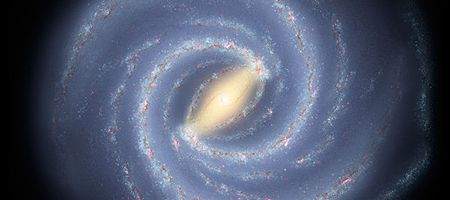UC Irvine astronomers have shown how the Milky Way galaxy’s iconic spiral arms were formed – through an intergalactic collision.

A dwarf galaxy named Sagittarius loaded with dark matter has forced its way through our own galaxy twice in the past two billion years, according to telescope data and detailed simulations. And it’s all set to do it again.
As the galaxies collide, the force of the impact sends stars streaming from both in long loops. Those continue to swell with stars and are gradually tugged outward by the Milky Way’s rotation into the familiar spiral.
It was the weighty dark matter from Sagittarius that provided the initial push, the researchers said.
“It’s kind of like putting a fist into a bathtub of water as opposed to your little finger,” says James Bullock, a theoretical cosmologist who studies galaxy formation.
The smaller Sagittarius galaxy, though, is being ripped apart by the encounters, sending huge amounts of its stars and dark matter spinning off into the new galactic arms.
“When all that dark matter first smacked into the Milky Way, 80 percent to 90 percent of it was stripped off,” says lead author Chris Purcell.
“That first impact triggered instabilities that were amplified, and quickly formed spiral arms and associated ring-like structures in the outskirts of our galaxy.”
We’re due to meet the Sagittarius galaxy again farily soon, when it strikes the southern face of the Milky Way disk, says Purcell – in just another 10 million years or so.






